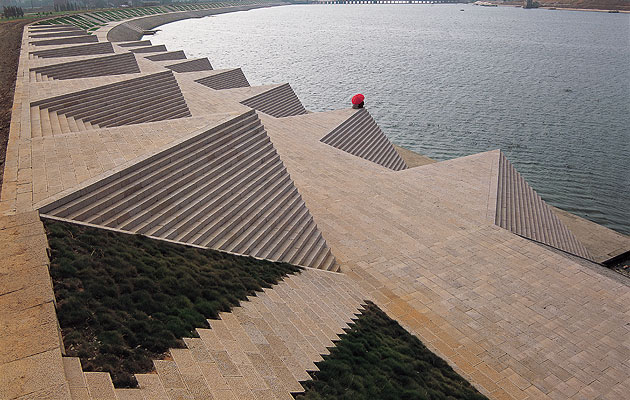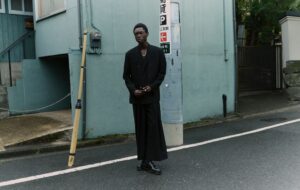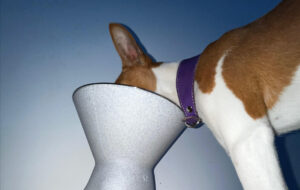|
|
||
|
Ai Weiwei, who has been called called “a surgeon of space”, had his studio complex in Shanghai demolished by the Chinese authorities in January – just months after he built it at their request. The studio had been a swansong for the artist and social critic, who swore off architecture in 2007 after helping design the Beijing Olympic stadium. Here he explains why he will never build again. On the morning of 11 January 2011 Ai Weiwei received a long-anticipated phone call from a neighbour to his Shanghai studio: under cover of night, the local government had sent a demolition team to destroy the million-dollar studio complex that they had beseeched him to build only months earlier. By the time Ai arrived from Beijing, his architectural swansong was rubble. He could only pose for photographs with the remains. Ai Weiwei (born 1957) is an artist and an architect, although he maintains he’s a retired architect. In 1999 he founded his architectural practice FAKE Design with the guiding philosophy “Keep it Simple”. After famously contributing to the design of Herzog & de Meuron’s “Bird’s Nest” stadium in Beijing, he publicly rejected the 2008 Olympics and decided not to get involved in any other commercial projects. He evolved into a lively social critic, shielded by his high international profile. Famous for his photography, documentary films, blogging and later microblogging (he has 60,000 followers on Twitter), he has put civil rights activism at the centre of his work. He believes that his studio was destroyed as a result of these political activities. Ai’s father, Ai Qing, was a revolutionary poet, exiled in the 1950s, but rehabilitated as a cultural hero in the 1980s. His literary spirit rubbed off on Ai, whose first book in translation, Ai Weiwei’s Blog (MIT Press, 2011), comprises long essays on his philosophy of architecture and design. We meet in Caochangdi, an art village on the northeastern outskirts of Beijing where Ai built his first studio-home in 1999. His presence there and his architectural contribution through three major studio complexes in trademark grey brick and concrete has established the village as an important cultural centre. ICON How are art and architecture related in your work? How do they fit together and influence each other? AW I actually never really separate those things: art, architecture, design and even curating. To me they are just different angles or different ways to talk about the same things. Architecture, or design, people say, have a practical aspect, but I would also say that art has a practical aspect. Actually, I will say: today’s architecture is not so practical. ICON But your architectural career, if we can call it an architectural career, was born out of pragmatism. AW Yes, I would never think to build anything which I wasn’t going to use or not going to imagine myself using. So the usage is the meaning, as Wittgenstein said. ICON You said once that you sketched out your Beijing studio house on a napkin, and that you finished it in a very short amount of time. This has become the legendary tale of how you started you architectural career. AW I do many things by intuition. I think most intuition comes from years of experience in dealing with life matters. I think about architecture in a second. I made a drawing, only with no measurements. But during construction – which took about 60 days – I was there every morning, so I saw any potential problems while building. There are a lot of changes during the building process, you make judgements based on your understanding. So it came out OK, many people like it and as a house it is quite practical. ICON What are some of the most important qualities for an artist’s studio? AW Artists want to be separated, to have a so-called “purified space” which can relieve them from thinking or acting and allow them to be more meditation-like. But of course that’s an old way of thinking – ridiculous. Over the past ten years I think I’ve hardly spent two days in my studio. I’m only in there when I’m showing people artworks. I have to be polite and so to prove I’m an artist I have this large space, which normal people would not have. I mean, who wants this space with such high ceilings and roof-lighting? Every day I sit in front of the computer. Physical space is not so important any more since the arrival of the computer. ICON You’ve said that the plain vernacular is also a style. And it makes me think of your writings, in which you talk about spaces that have lots of opportunity or that don’t limit you. I always think of your architecture as spaces with a lot of freedom and potential, which is very similar to your artwork. For me, your most architectural artwork is actually Fairytale [for which he brought 1,001 Chinese citizens to Germany for the 2007 Documenta art festival], because the participants had so much space to do act and interact how they chose. AW I totally agree. I think that’s really about how to use space: how to use an in-between state or take ordinary life as a kind of space or environment, and realise there are people who act within it and react to it. How to maximise possibilities for those people, how not to limit them but to suggest some kind of possibility? ICON Could you talk about how you approached the Jinhua Architecture Park? It’s an architectural park in which you invited many people to participate, but it’s also a memorial to your father. AW The Jinhua project came about because my father’s home town asked me to do a memorial park for him. So I went there and I saw this park which was really a patch of vegetation protecting the river, because by law, you need a 50m wide green band along the river. I told the city government that the best thing to do would be to do nothing, I hate over-design. But they said, “if you don’t do it we’ll ask someone else”. That would have been a disaster: I know Chinese designers. So I said, OK. I did a very light design, but they really didn’t like it. They thought I should put my father’s poetry on every stone. So I had to convince them that it’s best to read poetry from a book and not from a stone. Besides, the park is not just for people who knew my father, why force them to read some strange poetry? I made the design and everyone was impressed. They asked: “Do you want to do the other side of the river? We really like what you did here …” So I was hooked, but this time I invited architects to do 17 pavilions in the park.
credit Ai Weiwei ICON You also masterplanned Ordos 100 [in Inner Monogolia]. I’ve heard it’s completely empty. AW I haven’t been there recently. It’s actually a continuation of the Jinhua park project. In 2008, I got an invitation from Ordos, a private owner, who is also a collector and developer. He wanted me to design 100 villas, but because I no longer wanted to do so much architecture I declined. But I agreed to help curate it. The Olympic experience and other projects made me a little tired. [Jacques] Herzog recommended about 100 names, architects from all over the world, from 30 nations or more, all young. Some were already famous, the best of their nation or of their generation, and I invited them all to Ordos; there were too many to take out there at once. We organised a few buses to take 50 architects out there, and there was a police escort, this was a very big deal for the local area. For many it was their first time in China, and then to suddenly to come to this desert. It became like a world conference for young architects. At one stage we had 200 people together discussing … such a wonderful party! Many beautiful designs came out of it. ICON And everything was built? AW I heard some of them are started but I’m not really sure because, after the design phase, the developer wanted me out of the process. I heard there are political problems – there are always problems like this – the mayor has been arrested or something. That’s why in 2007 we decided not to do any more commercial architecture. I’ve seen enough, I’ve built enough. I cannot stand to see a project unfinished, that really hurts me. I mean you’re so dedicated, you’re so involved: every project is more or less a love affair. ICON You mentioned that art and architecture are working with the same things. How would you define that thing? AW You always use limited resources and limited gestures to suggest possibilities or to emphasise an idea. So much is similar in art and architecture, that’s the only part I’m interested in. How we deal with the current situation is how you maximise the condition and what it can suggest in material ways. You can say it is spiritual, or you can say it is something more than a physical condition; a physical condition is only a framework for possibility. ICON In that sense, how do you feel about your 2010 installation in the Tate Modern Turbine Hall, the sunflower seeds? AW In the Turbine Hall I worked in a negative sense, because the hall adds such an architectural element itself, it doesn’t need another architectural element. Many works just emphasise the space and volume. I went in the opposite direction. I wanted to make the space very small. Each individual seed is maybe 1cm large, but each one is carefully worked on, manually made by many, many people over a long time. Each thing has been made through a very complicated process, which is a little bit unbelievable, and when you see it you can never really grasp the total experience, you only can imagine it. It suggests something much more than the volume of the Turbine Hall itself. ICON The Shanghai studio was similar to your Beijing one. After so much experience building studios, was it an improvement? AW Yes it was. At the very beginning I told the local government: “No, we’re not dealing with government anymore” – those were my exact words. And they insisted, they were very sincere, they dragged me to Shanghai to see the space. I’m very easygoing, I said “OK, let’s do it”. I thought it would be my last project. We had already decided not to do architecture and my impression of Shanghai has never been a good one. So we built a very nice project and many people said it was the best design I ever did. But suddenly the local government wanted to destroy it. Obviously it was for political reasons, everything’s for political reasons in China, and then there’s no argument. About two years ago I wrote an article about demolition as an architectural issue, because I think ruins are still a part of architectural activities. But I never imagined that my building would be turned to ruins so quickly. |
Image Jonathan Browning
Words Lee Ambrozy |
|
|
||
|
credit Ai Weiwei |
||


















